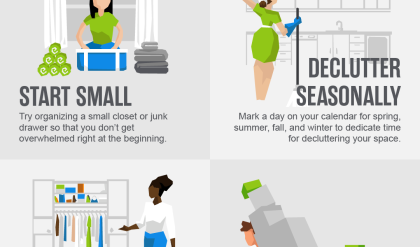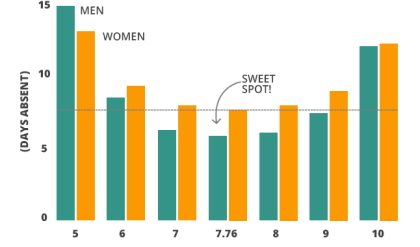
10 Simple Life Hacks to Streamline Your Daily Routine & Reclaim Your Time
Feeling overwhelmed by the relentless march of daily tasks? Wish you had more time for the things you love? You’re not alone. The secret to a smoother, more efficient day isn’t about superhuman productivity, but about smart, strategic choices. These ten simple life hacks can dramatically streamline your routine, giving you back precious moments and a renewed sense of calm.
1. The Two-Minute Rule: Conquer the Clutter
Inspired by the power of small actions, this hack tackles those nagging little tasks that accumulate and create overwhelm. Anything taking less than two minutes? Do it immediately. Answer that email, wash that one dish, put away that stray sock. Prevent minor inconveniences from snowballing into monstrous to-do lists.
2. The “Power Hour”: Focused Energy Burst
Instead of passively drifting through your day, dedicate a specific hour to tackling your most important task. Eliminate distractions, turn off notifications, and pour all your energy into achieving a significant win early in the day. The feeling of accomplishment will fuel your momentum for the rest of the day.
3. Batch Similar Tasks: Efficiency Multiplier
Group similar activities together. Need to make phone calls? Schedule a dedicated “phone call hour.” Running errands? Plan a specific route and tackle them all at once. This reduces mental switching costs and boosts overall efficiency.
4. Embrace the Power of Prepping: Future You Will Thank You
Prepare elements of your day the night before. Lay out your clothes, pack your lunch, or even pre-chop vegetables for dinner. These small preparations will save valuable time and reduce morning stress.
5. The Art of Saying “No”: Protecting Your Time
Learn to politely decline commitments that don’t align with your priorities or energy levels. Over-scheduling leads to burnout. Prioritizing self-care is not selfish; it’s essential for long-term well-being and productivity.
6. Utilize Technology Wisely: Your Digital Assistant
Smart calendars, reminder apps, and to-do list managers are your allies. Use them to schedule appointments, set reminders, and track progress. Technology can free up mental space and prevent missed deadlines.
7. The “Brain Dump” Method: Unclutter Your Mind
Feeling mentally scattered? Dedicate 5-10 minutes to jot down everything swirling in your head – tasks, ideas, worries. Getting them out of your mind and onto paper creates mental clarity and reduces anxiety.
8. Mindful Movement Breaks: Recharge Your Battery
Incorporate short breaks throughout your day for mindful movement. A quick walk, a few stretches, or even deep breathing exercises can significantly boost energy levels and reduce stress, improving focus and productivity.
9. The Power of Routine: Predictability and Peace
Establish a consistent daily routine. This provides structure and predictability, reducing decision fatigue and freeing up mental energy for more important tasks. A well-structured routine cultivates a sense of calm and control.
10. Review and Refine: Continuous Improvement
Regularly review your routine. What’s working? What’s not? Adjust your strategies as needed. Continuous improvement is key to optimizing your daily workflow and maximizing your time.
Summary Table: Quick Life Hacks at a Glance
| Hack | Description | Benefit |
|---|---|---|
| Two-Minute Rule | Do tasks under 2 minutes immediately. | Prevents task pile-up; reduces overwhelm. |
| Power Hour | Focus on one key task for an hour. | Early wins fuel momentum; boosts productivity. |
| Batching | Group similar tasks together. | Increases efficiency; reduces mental switching. |
| Prepping | Prepare for the next day the night before. | Saves time; reduces morning stress. |
| Saying “No” | Decline unnecessary commitments. | Prevents burnout; protects your energy. |
| Technology | Use apps for scheduling and reminders. | Improves organization; prevents missed deadlines. |
| Brain Dump | Write down everything on your mind. | Clears mental clutter; reduces anxiety. |
| Mindful Movement | Incorporate short breaks for movement. | Boosts energy; improves focus. |
| Routine | Establish a consistent daily schedule. | Provides structure; reduces decision fatigue. |
| Review & Refine | Regularly assess and adjust your routine. | Continuous improvement; maximizes efficiency. |
By incorporating these simple yet effective strategies into your daily life, you can reclaim valuable time, reduce stress, and experience a greater sense of accomplishment and well-being.

Additional Information
Deep Dive: 10 Simple Life Hacks to Streamline Your Daily Routine – An Analytical Perspective
While the concept of “life hacks” often evokes images of quick fixes, a deeper analysis reveals that their effectiveness stems from leveraging established principles of time management, cognitive psychology, and behavioral economics. Let’s delve into ten common life hacks, exploring the underlying mechanisms and offering insights for optimization:
1. The Two-Minute Rule: This hack suggests completing any task that takes less than two minutes immediately. The underlying principle is minimizing cognitive load. Studies in cognitive psychology demonstrate that the “activation energy” required to initiate a task is often higher than the energy required to complete it. By instantly tackling small tasks, we circumvent decision fatigue and prevent the accumulation of trivial chores that overwhelm us later. Example: Instead of letting dirty dishes sit, wash them immediately after a meal. Value-add: This hack is particularly effective when integrated with a “Getting Things Done” (GTD) system, prioritizing immediate action for low-effort tasks.
2. Batch Similar Tasks: Grouping similar activities together enhances efficiency by minimizing context switching costs. Research on task-switching shows that the human brain takes time to refocus when shifting between dissimilar activities, leading to reduced overall productivity. Example: Answering all emails at a designated time instead of sporadically throughout the day. Value-add: This technique can be further refined by considering the energy levels throughout the day. High-focus tasks should be scheduled during peak performance periods.
3. Time Blocking: Allocating specific time slots for specific activities provides structure and improves focus. This aligns with the concept of “structured procrastination,” where tasks are completed efficiently within allocated timeframes, even if they are initially avoided. Example: Dedicate 9-10 am to writing, 10-11 am to responding to emails, etc. Value-add: Experiment with different time block durations to find the optimal balance between focus and flexibility. Incorporating buffer time between blocks accommodates unforeseen interruptions.
4. Eliminate Distractions: Minimizing interruptions is crucial for sustained focus. Studies have shown that it takes an average of 23 minutes to regain focus after a distraction. Example: Turning off notifications on your phone or using website blockers during work. Value-add: This goes beyond simple silencing; consider creating a dedicated workspace free from clutter and visual distractions. Environmental psychology highlights the impact of the physical environment on cognitive performance.
5. Prepare the Night Before: Planning your outfit, packing your lunch, or preparing breakfast components the night before saves valuable time in the morning. This preemptive action reduces decision fatigue and streamlines the morning routine, leading to a more relaxed start. Example: Laying out clothes and preparing a quick breakfast the night before work. Value-add: Analyze your morning routine to identify bottlenecks and prioritize tasks for preparation the previous evening.
6. Utilize Technology: Leverage apps and tools to automate repetitive tasks. This frees up mental resources and increases efficiency. Example: Using calendar reminders, automated bill payments, or grocery delivery services. Value-add: Research and select tools that integrate seamlessly with your existing workflow to avoid further complexity.
7. The Pareto Principle (80/20 Rule): Identify the 20% of your efforts that yield 80% of your results and prioritize them. This requires a self-assessment of tasks to identify high-impact activities and allocate resources accordingly. Example: Focusing on high-priority clients or projects that generate the most revenue. Value-add: Regularly review and adjust your prioritization based on changing circumstances and goals.
8. Declutter Your Space: A clean and organized environment promotes a clearer mind. Studies show that visual clutter increases stress and impairs cognitive function. Example: Regularly tidying your workspace or home. Value-add: Decluttering should be an ongoing process, not a one-time event. Implement a system for maintaining order and minimizing future clutter.
9. Practice Mindfulness & Meditation: Improving mindfulness can help increase focus and reduce stress, leading to better time management. Studies have demonstrated the positive effects of mindfulness on attention span and emotional regulation. Example: Practicing 5-10 minutes of meditation daily. Value-add: Integrate mindfulness practices into your daily routine, such as mindful breathing exercises throughout the day.
10. Delegate When Possible: Don’t be afraid to ask for help or delegate tasks that others can handle. This frees up your time for higher-priority activities. Example: Delegating household chores to family members or outsourcing tasks to freelancers. Value-add: Clearly define responsibilities and expectations when delegating to ensure smooth workflow and avoid potential conflicts.
In conclusion, while these life hacks appear simple, their efficacy hinges on understanding the underlying psychological and behavioral principles that drive productivity and efficiency. By integrating these strategies thoughtfully and adapting them to individual circumstances, one can significantly streamline their daily routine and achieve a greater sense of control and accomplishment. Continuous self-reflection and iterative refinement are crucial for maximizing the long-term benefits of these techniques.






